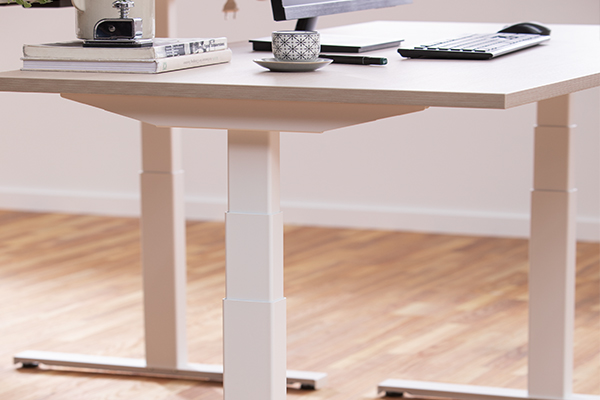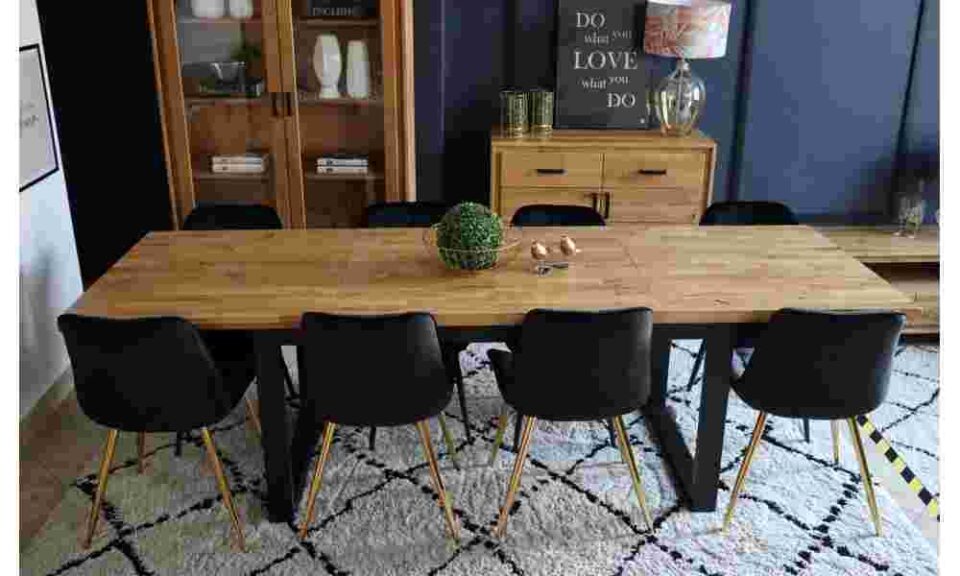Furniture design is a carefully crafted art, with every detail playing a role in shaping a room’s overall ambiance. One often-overlooked yet impactful detail is furniture leg height. Whether tall and slender or low and sturdy, the height of furniture legs affects how we perceive space, movement, and aesthetics within an interior. The way furniture interacts with light, surrounding elements, and spatial composition can either create a sense of openness or contribute to a more grounded and intimate environment.
Creating an Illusion of Spaciousness
One of the most significant ways furniture leg height influences room perception is through its ability to manipulate the sense of space. Taller furniture legs allow for more visibility underneath, creating an airy, open feel. When more floor space is visible, a room appears larger and less cluttered. This principle is particularly useful in small apartments or rooms with limited square footage, where maximizing perceived space is a priority.
In contrast, low-profile furniture with shorter legs creates a more enclosed, cozy atmosphere. The reduced clearance between the furniture and the floor minimizes open space, leading to a more anchored and intimate design. This approach works well in larger rooms where warmth and grounding elements are needed to balance the vastness of the space.
Enhancing Light and Shadow Play
Light interacts differently with furniture depending on leg height. Taller furniture with more clearance underneath allows natural and artificial light to pass through, resulting in an airy and luminous ambiance. This effect is particularly beneficial in rooms with minimal lighting or darker color palettes, as it helps distribute light evenly and reduces visual heaviness.
On the other hand, low furniture absorbs more light, casting subtle shadows that create depth and contrast within a space. This effect can be utilized to add dimension to minimalist designs, where a balance between light and dark elements is essential for visual intrigue.
Establishing a Design Narrative
Furniture leg height also plays a role in defining the style and era of an interior. Different heights contribute to distinct aesthetics that align with specific design philosophies.
- Mid-Century Modern Elegance. Mid-century modern furniture is characterized by elevated, slender legs that create an effortlessly elegant and functional aesthetic. The emphasis on clean lines and open space results in furniture that feels light and unobtrusive. This design choice pairs well with minimalist and contemporary interiors, where the goal is to maintain an uncluttered yet stylish look.
- Classic and Traditional Appeal. In contrast, traditional furniture designs often feature shorter, more robust legs or no visible legs at all. This characteristic is prevalent in classic European and Victorian styles, where furniture is meant to evoke a sense of grandeur and permanence. These designs are ideal for formal living rooms or spaces that embrace timeless sophistication.
- Scandinavian Simplicity. Scandinavian-inspired furniture often features moderately high, tapered legs that provide a balance between openness and stability. The blend of natural materials and simple leg structures results in a clean and inviting atmosphere that aligns with the philosophy of functionality and comfort.
- Industrial and Rustic Grounding. Furniture within industrial or rustic styles tends to embrace a heavier, grounded appearance. Pieces often feature metal or reclaimed wood with shorter legs, ensuring a raw, sturdy aesthetic that complements loft-style or farmhouse interiors. These lower profiles create a sense of solidity and ruggedness, which aligns with the design ethos of these styles.

Functional Considerations of Furniture Leg Height
While visual perception is key, practical functionality should not be overlooked when selecting furniture leg height.
- Ease of Cleaning. Furniture with higher legs makes cleaning easier by allowing vacuums and mops to access hard-to-reach areas. In contrast, low-leg or no-leg furniture requires more effort to move or clean under, which may lead to dust accumulation.
- Accessibility and Ergonomics. The height of furniture legs also affects accessibility and ease of use. Taller seating options, such as high-legged chairs and sofas, provide ergonomic benefits by making it easier to sit and stand. This is particularly advantageous for elderly individuals or those with mobility challenges. Lower furniture, on the other hand, promotes a relaxed, lounge-style seating arrangement ideal for casual living spaces.
- Stability and Durability. Lower furniture legs often provide more stability, reducing the likelihood of wobbling or tipping over. This makes them ideal for households with young children or pets, where safety is a priority. Conversely, taller furniture can sometimes be less stable, especially if constructed with lighter materials, making proper weight distribution an important factor in design considerations.
Pairing Furniture Leg Heights for Visual Harmony
Achieving a well-balanced interior often requires a thoughtful mix of furniture leg heights. Rooms with entirely tall-legged furniture can feel overly sparse, while exclusively low-profile pieces may create a sense of heaviness. Mixing different heights allows for dynamic layering and an engaging composition.
For example, a living room may feature a tall-legged sofa paired with a low coffee table, creating contrast while maintaining cohesion. Dining spaces can benefit from high-legged chairs surrounding a moderately legged table, ensuring both elegance and stability.
Similarly, layering heights in bedroom design enhances functionality and aesthetics. A low-profile bed frame promotes a restful feel, while taller nightstands provide easy accessibility without overwhelming the space.
The Role of Materials in Leg Height Influence
The material of furniture legs also contributes to how their height is perceived and how they fit within a room’s design.
- Wooden Legs: Wooden legs in various heights can transition between classic, modern, and rustic aesthetics. Light-toned woods like oak and maple in tall legs enhance a Scandinavian or contemporary feel, while darker woods in shorter legs evoke a vintage charm.
- Metal Legs: Metallic furniture legs, particularly in taller heights, often contribute to an industrial or minimalist look. Chrome, black steel, or brass elevate the sleekness of modern designs.
- Acrylic or Glass Legs: Transparent legs create the illusion of floating furniture, emphasizing openness regardless of height. This effect is particularly beneficial in small spaces where reducing visual clutter is essential.
Leg Height in Relation to Ceiling Height
Another crucial consideration is the relationship between furniture leg height and ceiling height. In rooms with high ceilings, low-profile furniture can feel disproportionate and disconnected from the space. Taller furniture helps maintain a sense of vertical balance, drawing the eye upward and harmonizing the dimensions.
Conversely, in rooms with lower ceilings, excessive use of tall-legged furniture can make the space feel constrained and awkward. Lower furniture establishes a more proportionate relationship, preventing an overwhelming visual experience.
Understanding the impact of furniture leg height allows homeowners and designers to make informed choices that enhance both the aesthetic and functional aspects of a space. Whether creating an illusion of spaciousness, reinforcing a design style, or ensuring ergonomic comfort, the right leg height can transform the way a room feels and functions.

